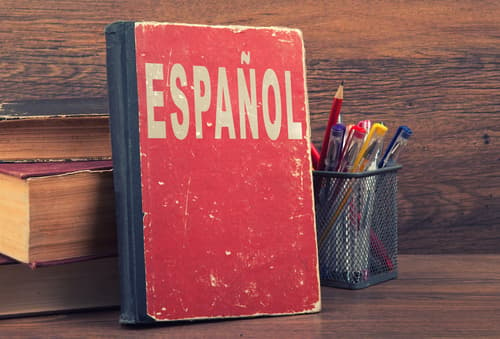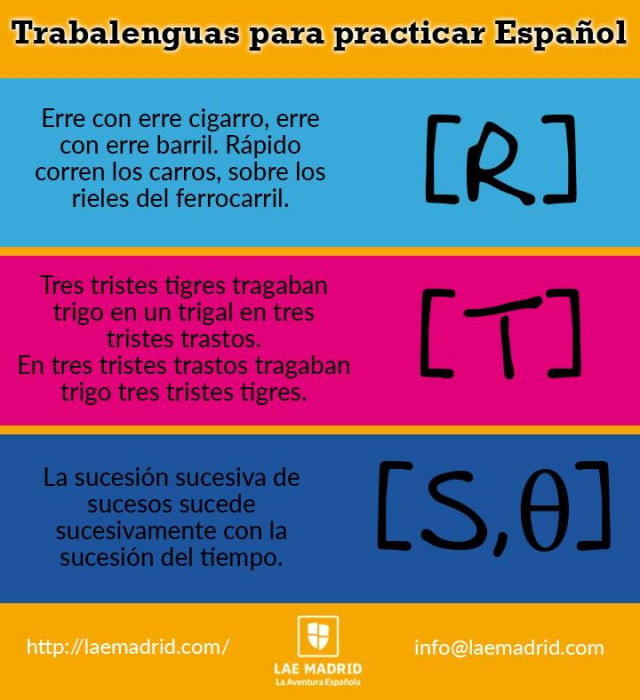Five tricks to help you sound like a native in Spanish

The struggle is real when it comes to making sure your Spanish is perfect and however good your level, there's always room to improve.
Belen Berrocal, Director of Studies of LAE Madrid, the leading Spanish academy in Madrid, gives some great tips on how to sound like a native Spanish speaker and really help your Spanish stand out.
Use linking words
Linking your phrases makes your speech sound more natural and less robotic. Here is a list of some examples:
So: Estoy demasiado agobiada, así que no puedo terminarlo.
I am too overwhelmed, so I can't finish.
Then: Si no te gusta, entonces no vayas
If you don't like it, then don't go.
Since: Dado que sabes cómo llegar, podrás ir tú.
Given that you know how to get there, you can go.

Photo: Deposit Photos
Use expressions and idioms
We all know that sounding like a native isn’t a piece of cake, but memorizing some of the most commonly used expressions can make a huge difference. Here are just a few that you should add into your vocabulary:
To speak freely: Mi amiga no tiene pelos en la lengua, siempre dice lo que piensa.
My friend always speaks freely; she says everything that’s on her mind.
A piece of cake: Tardé muy poco en hacer el ejercicio. ¡Era pan comido!
It took me no time to finish the exercise. It was a piece of cake!
To be far away: Ahora tendré que despertarme muy temprano, mi nuevo trabajo está en el quinto pino.
From now on I’ll have to wake-up really early. My new job is far away.
READ MORE: Most common idioms in Spanish
Use filler words
No matter what level of Spanish you have, there will always be a moment when you have to pause or think about the best word to use. Even native speakers do it! The only difference is that they will automatically use a filler word to hide the pause. Here are some examples of those:
Blah, blah, blah: La dependiente me dijo que no podía devolver la ropa porque... no sé qué, no sé cuánto.
The shop assistant told me that I couldn’t return the clothes and blah, blah, blah.
Well: Bueno… Vamos a Zara ya que H&M está cerrado.
Well… We’ll go to Zara, as H&M is closed.
I mean: Este es un boli de mi padre, o sea, no lo pierdas.
This is my father’s pen, so don’t lose it.
Let’s see: Esto está hecho un desastre. A ver, por dónde empiezo.
This is a complete disaster. Let’s see where to start.
Improve your accent
Pronunciation is one of those things that immediately give you away as a foreigner. Even so, there are ways to make your accent less noticeable and, who knows, maybe Spaniards will just think that you come from a different region. We’re sure you’ve heard a lot about rolling your “r” and the difference between “c” and “s”. Here are some ways you can work on improving those:
-
Start with some tongue twisters in Spanish. There are a lot that concentrate on a specific sound. Here are just a few.

-
Teachers often advise that you record yourself to notice the sounds that don’t feel you pronounce correctly and practice them. You can even record a few phrases from a tv-show or an eBook narrated by a native and then compare your recording to the original. You’ll be surprised what a difference it can make in just a week.
-
Pay a special attention to the intonation, as it’s quite different in Spanish and natives tend to highlight specific parts of a sentence.
Explain like a native
Here’s a little trick that’ll make you sound like a local (or at least someone who really gets Spanish culture) without a lot of effort. Spaniards often start phrases with “es que…” when they want to give an explanation or refuse an offer. Here are some examples of how it’s used:
To give an explanation: Perdón por no llamarte. Es que he tenido mucho trabajo esta semana.
Sorry for not calling you, I had a lot of work this week.
To refuse an invitation: ¿Quieres ir al cine este finde?
No, perdón. Es que estoy ayudando a mi amigo con la mudanza.
Would you like to go to the movie during the weekend?
No, sorry. I’m helping my friend with a move.
So there you have it. Keep working on your Spanish and use these handy tips and tricks to really give you that extra push.
If you’re interested in learning more Spanish, check out courses offered by LAE Madrid, the leading Spanish academy in Madrid. Accredited by the Insitituto Cervantes, it offers Spanish courses for all levels and also has Spanish classes for kids and families. Read their blog for more Spanish!
Comments
See Also
Belen Berrocal, Director of Studies of LAE Madrid, the leading Spanish academy in Madrid, gives some great tips on how to sound like a native Spanish speaker and really help your Spanish stand out.
Use linking words
Linking your phrases makes your speech sound more natural and less robotic. Here is a list of some examples:
So: Estoy demasiado agobiada, así que no puedo terminarlo.
I am too overwhelmed, so I can't finish.
Then: Si no te gusta, entonces no vayas
If you don't like it, then don't go.
Since: Dado que sabes cómo llegar, podrás ir tú.
Given that you know how to get there, you can go.

Photo: Deposit Photos
Use expressions and idioms
We all know that sounding like a native isn’t a piece of cake, but memorizing some of the most commonly used expressions can make a huge difference. Here are just a few that you should add into your vocabulary:
To speak freely: Mi amiga no tiene pelos en la lengua, siempre dice lo que piensa.
My friend always speaks freely; she says everything that’s on her mind.
A piece of cake: Tardé muy poco en hacer el ejercicio. ¡Era pan comido!
It took me no time to finish the exercise. It was a piece of cake!
To be far away: Ahora tendré que despertarme muy temprano, mi nuevo trabajo está en el quinto pino.
From now on I’ll have to wake-up really early. My new job is far away.
READ MORE: Most common idioms in Spanish
Use filler words
No matter what level of Spanish you have, there will always be a moment when you have to pause or think about the best word to use. Even native speakers do it! The only difference is that they will automatically use a filler word to hide the pause. Here are some examples of those:
Blah, blah, blah: La dependiente me dijo que no podía devolver la ropa porque... no sé qué, no sé cuánto.
The shop assistant told me that I couldn’t return the clothes and blah, blah, blah.
Well: Bueno… Vamos a Zara ya que H&M está cerrado.
Well… We’ll go to Zara, as H&M is closed.
I mean: Este es un boli de mi padre, o sea, no lo pierdas.
This is my father’s pen, so don’t lose it.
Let’s see: Esto está hecho un desastre. A ver, por dónde empiezo.
This is a complete disaster. Let’s see where to start.
Improve your accent
Pronunciation is one of those things that immediately give you away as a foreigner. Even so, there are ways to make your accent less noticeable and, who knows, maybe Spaniards will just think that you come from a different region. We’re sure you’ve heard a lot about rolling your “r” and the difference between “c” and “s”. Here are some ways you can work on improving those:
- Start with some tongue twisters in Spanish. There are a lot that concentrate on a specific sound. Here are just a few.

- Teachers often advise that you record yourself to notice the sounds that don’t feel you pronounce correctly and practice them. You can even record a few phrases from a tv-show or an eBook narrated by a native and then compare your recording to the original. You’ll be surprised what a difference it can make in just a week.
- Pay a special attention to the intonation, as it’s quite different in Spanish and natives tend to highlight specific parts of a sentence.
Explain like a native
Here’s a little trick that’ll make you sound like a local (or at least someone who really gets Spanish culture) without a lot of effort. Spaniards often start phrases with “es que…” when they want to give an explanation or refuse an offer. Here are some examples of how it’s used:
To give an explanation: Perdón por no llamarte. Es que he tenido mucho trabajo esta semana.
Sorry for not calling you, I had a lot of work this week.
To refuse an invitation: ¿Quieres ir al cine este finde?
No, perdón. Es que estoy ayudando a mi amigo con la mudanza.
Would you like to go to the movie during the weekend?
No, sorry. I’m helping my friend with a move.
So there you have it. Keep working on your Spanish and use these handy tips and tricks to really give you that extra push.
If you’re interested in learning more Spanish, check out courses offered by LAE Madrid, the leading Spanish academy in Madrid. Accredited by the Insitituto Cervantes, it offers Spanish courses for all levels and also has Spanish classes for kids and families. Read their blog for more Spanish!
Join the conversation in our comments section below. Share your own views and experience and if you have a question or suggestion for our journalists then email us at [email protected].
Please keep comments civil, constructive and on topic – and make sure to read our terms of use before getting involved.
Please log in here to leave a comment.